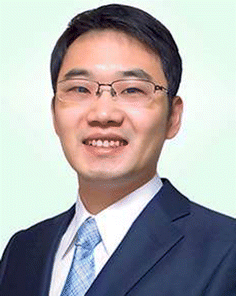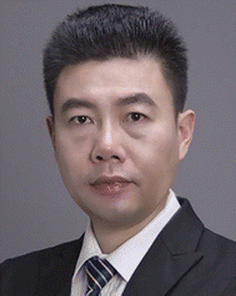Advanced functional inorganic materials for information technology and applications
Xuebin
Wang
 *a,
Haibo
Zeng
*a,
Haibo
Zeng
 *b and
Zhiguo
Xia
*b and
Zhiguo
Xia
 *c
*c
aNational Laboratory of Solid State Microstructures (NLSSM), Collaborative Innovation Center of Advanced Microstructures, Frontiers Science Center for Critical Earth Material Cycling, College of Engineering and Applied Sciences, Nanjing University, Nanjing 210093, China. E-mail: wangxb@nju.edu.cn; Web: https://eng.nju.edu.cn/wxb/main.htm
bMIIT Key Laboratory of Advanced Display Materials and Devices, Institute of Optoelectronics & Nanomaterials, School of Materials Science and Engineering, Nanjing University of Science and Technology, Nanjing 210094, China. E-mail: zeng.haibo@njust.edu.cn; Web: https://smse.njust.edu.cn/b5/4a/c10228a177482/page.htm
cState Key Laboratory of Luminescent Materials and Devices, Guangdong Provincial Key Laboratory of Fiber Laser Materials and Applied Techniques, Guangdong Engineering Technology Research and Development Center of Special Optical Fiber Materials and Devices, School of Physics and Optoelectronics, South China University of Technology, Guangzhou 510641, China. E-mail: xiazg@scut.edu.cn; Web: https://www2.scut.edu.cn/physics/2021/0312/c13953a421511/page.htm
Information- and energy-related applications of materials are two of the most popular areas in materials science.1 Advanced inorganic materials have proven foundational to the progress of human society, with some envisioning the “second Stone Age” as these materials currently find increasingly diverse and transformative applications. Characterized by multifaceted functionality and exceptional performance, advanced functional inorganic materials have become indispensable in driving technological breakthroughs across a wide range of fields, including energy, information, environment, catalysis, electromagnetism, electronics, optoelectronics, sensing, biomedicine, artificial intelligence, and so on. The themed collection, advanced functional inorganic materials for information technology and applications, features 25 innovative papers highlighting the latest progress and emerging perspectives on inorganic materials for information-related applications. These papers emphasize the pivotal role of advanced functional inorganic materials in the development of information technology and its applications.2
This themed collection aims to showcase innovations in cutting-edge synthesis techniques, characterization methodologies, and information-related applications of advanced functional inorganic materials. It is also dedicated to the 6th International Symposium on Advanced Inorganic Materials (ISAIM) held in Nanjing, chaired by Yoshio Bando, Haibo Zeng, Liang Li, Yuanjian Zhang, Xuebin Wang, Xiangfen Jiang, Wei Tian, and Min Zhou.
Advanced inorganic materials are essential for energy storage and conversion systems. For instance, Zhao et al. proposed various strategies for aqueous zinc-ion batteries, focusing on future directions for sulfur hosts, additives, and separators (https://doi.org/10.1039/D4TC03375B). Li et al. designed hierarchical and multi-dimensional armor catalysts, i.e., 0D Co nanoparticles, 1D carbon nanotubes, and 2D carbon nanosheets, to enhance sulfur loading and confine polysulfides (https://doi.org/10.1039/D4TC02573C). Li et al. designed lithiophilic Ag sites in 3D N-doped porous carbon to diminish local current density, enabling dendrite-free lithium metal anodes (https://doi.org/10.1039/D4TC01835D). Zhou et al. introduced Ti3C2Tx/Co/N-doped carbon nanotubes as a sodiophilic framework for dendrite-free sodium metal anodes, with –O terminations and abundant N species ensuring superior sodiophilicity (https://doi.org/10.1039/D4TC02740J). Liu et al. demonstrated a direct impregnation method for large-scale production of thermally stable single-atom catalysts, with atomic dispersion derived from the trapping of metal atoms by silane nests (https://doi.org/10.1039/D4TC02758B). Li et al. demonstrated that heterostructures featuring a g-C3N4 shell and A-TiO2 core exhibit stronger photocurrent responses compared to the reverse configuration, underscoring the configuration-dependent strategy (https://doi.org/10.1039/D4TC02562H).
The scaling of metal oxide semiconductor field-effect transistors has underpinned the semiconductor industry for decades.3 Two-dimensional semiconductors hold promise as channel materials for advancing nanoelectronics in the post-Moore era. High dielectric constant (κ) materials are key to further advancing microelectronic miniaturization. Chen et al. identified silicon nitride (Si3N4) as a native high-κ dielectric for 2D MSi2N4 (M denotes Mo or W) and revealed that hydrogenation effectively passivates dangling bonds, improving interface performance (https://doi.org/10.1039/D4TC01938E). Hu et al. explored 2D InGeX3 (X = S, Se and Te) and their 2D Janus derivatives, advancing the understanding of their stability and electronic properties (https://doi.org/10.1039/D4TC02618G). Thermally conductive materials are crucial in the information field for managing heat in electronic devices. Efficient heat dissipation ensures the reliability of processors and memory chips, preventing overheating and extending device lifespan. Bai et al. developed a hybrid filler through in situ growth of carbon on BN surfaces. The carbon serves as bridge between BN, preventing agglomeration and facilitating a smooth thermal conduction network (https://doi.org/10.1039/D4TC02766C).
In addressing environmental challenges, inorganic materials are widely employed in pollution control, including catalysts for emission reduction and adsorbents for purification. For example, photocatalysts enable effective removal of pollutants and degradation of contaminants. Meng et al. developed a one-pot method to fabricate photocatalytic hydrogel bands for efficient dye degradation. The interactions between TiO2/rGO/PVA impart good mechanical strength and self-healing capability to the hydrogel (https://doi.org/10.1039/D4TC02634A).
Magnetic materials play an important role in improving the efficiency of devices in electric power generation, conversion, transportation, and other energy-utilization sectors.4 Zhang et al. reported that a hybrid heterojunction integrates a magnetic SrCoO2.5 thin film into a p-WSe2/n-quasi-2D electron gas heterostructure. The fabricated devices display a prominent self-excited charging behavior, magneto-optical encoding, and photomagnetoresistance (https://doi.org/10.1039/D4TC02341B).
Optoelectronic devices, such as LEDs, photodetectors, and optical modulators, rely heavily on materials and interfaces for next-generation advancements. Xian et al. discovered a green-emitting Ca2YScAl2Si2O12:Ce3+ garnet-type inorganic phosphor with outstanding photoluminescence (https://doi.org/10.1039/D4TC02039A). Jia et al. fabricated a WS2/AsP heterojunction with a type-II band structure, where the built-in electric field at the interface can reduces dark currents and enhances charge separation (https://doi.org/10.1039/D4TC02728K). Duan et al. improved CuBiI4 crystalline films with bromine doping, achieving a 4.8-fold increase in photocurrent density (https://doi.org/10.1039/D4TC01944J). Guan et al. designed perovskite-based photodetectors by depositing gold nanospheres on supersmooth CsPbBr3 microplates, achieving an on/off ratio of 448 and the responsivity of 8430 mA W−1 (https://doi.org/10.1039/D4TC02690J).
Thermoelectric materials hold promise for applications like converting body heat into electricity, utilizing the Seebeck effect driven by temperature gradients.5 Masoumi et al. conducted a comprehensive investigation into the thermoelectric properties of PEDOT:PSS thin films hybridized with Bi0.5Sb1.5Te3 particles, exploring the correlation between particle size/concentration, post-treatment strategies, and the resulting microstructural, morphological, and flexible thermoelectric properties. Their findings offer insights into understanding inorganic/polymeric composites and optimizing power factor (https://doi.org/10.1039/D4TC00881B).
Piezoelectric materials are widely used for energy harvesting due to their excellent electromechanical conversion properties. With growing environmental concerns about lead-based materials, lead-free alternatives are urgently needed.6 Ferroelectric materials, known for their strong spontaneous polarization, power compact autonomous energy storage devices, generating hundreds of kilovolt voltages, multi-kiloampere currents, and megawatt power levels for short durations.7 Inorganic nanomaterials also have great potential in biomedicine, particularly for drug delivery, diagnostics, imaging, and therapy, with a focus on improving their biodegradability and clearance.8
As guest editors of this themed collection, we extend our heartfelt gratitude to our friends and colleagues who have contributed to and reviewed the papers included in this collection. We also wish to express our sincere appreciation to Dr Rose Wedgbury, Dr Hemna Fathima, and the editorial team of Journal of Materials Chemistry C and Materials Advances. We hope this collection serves as both an inspiration and a valuable resource for researchers across disciplines, and we trust that researchers from various fields will enjoy reading it.
References
- C. Y. Zhi, Energy and optoelectronic related nanomaterials and applications, Small, 2017, 13, 1703395, DOI:10.1002/smll.201703395
.
- M. S. Dyer,
et al., Computationally assisted identification of functional inorganic materials, Science, 2013, 340, 847–852, DOI:10.1126/science.1226558
.
- E. Vogel, Technology and metrology of new electronic materials and devices, Nat. Nanotech., 2007, 2, 25–32, DOI:10.1038/nnano.2006.142
.
- O. Gutfleisch,
et al., Magnetic materials and devices for the 21st century: stronger, lighter, and more energy efficient, Adv. Mater., 2011, 23, 821–842, DOI:10.1002/adma.201002180
.
- D. Zhang,
et al., Recent advances in pyroelectric materials and applications, Small, 2021, 17, 2103960, DOI:10.1002/smll.202103960
.
-
M. S. Vijaya, Piezoelectric materials and devices: applications in engineering and medical sciences, CRC Press, 2012 Search PubMed
.
- S. I. Shkuratov and C. S. Lynch, A review of ferroelectric materials for high power devices, J. Materiomics, 2022, 8, 739–752, DOI:10.1016/j.jmat.2022.04.002
.
- X. W. Wang,
et al., Inorganic nanomaterials with rapid clearance for biomedical applications, Chem. Soc. Rev., 2021, 50, 8669–8742, 10.1039/D0CS00461H
.
| This journal is © The Royal Society of Chemistry 2025 |



